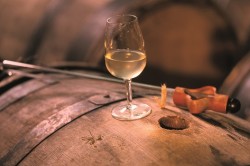 Champagnes’ place in the popular culture originates in the cellars of the Hautvillers’ Benedictine Abbey. Fermentation of wine produced there would stop prematurely due to exposure to low temperatures common to northern France harsh colder seasons. As the spring approached the dormant yeasts enclosed in the seasoning bottles would start consuming sugars again with carbon dioxide as a side effect. Pressure inside the containers would raise eventually leading to severe explosions shattering vast stocks of wine, giving this primitive sparkling wine the nickname: “le vin du diable“.
Champagnes’ place in the popular culture originates in the cellars of the Hautvillers’ Benedictine Abbey. Fermentation of wine produced there would stop prematurely due to exposure to low temperatures common to northern France harsh colder seasons. As the spring approached the dormant yeasts enclosed in the seasoning bottles would start consuming sugars again with carbon dioxide as a side effect. Pressure inside the containers would raise eventually leading to severe explosions shattering vast stocks of wine, giving this primitive sparkling wine the nickname: “le vin du diable“.
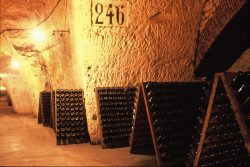 Here is where the famous Dom Perignon enters the stage. Widely known as modern champagne’s first propagator he was in fact hired by Hautvillers’ abbot to find a solution to the devastating bubbles problem. Successful as he was in this field hadn’t it been for the English, his name would be forever lost in the tides of history. And perhaps so would be the effervescence which makes champagne an object of universal praise today. English upper-classes – very fond of French wine – would witness the same process of unintended double fermentation as their southern neighbours, but what was seen as an obvious flaw they had forged into a much desired merit.
Here is where the famous Dom Perignon enters the stage. Widely known as modern champagne’s first propagator he was in fact hired by Hautvillers’ abbot to find a solution to the devastating bubbles problem. Successful as he was in this field hadn’t it been for the English, his name would be forever lost in the tides of history. And perhaps so would be the effervescence which makes champagne an object of universal praise today. English upper-classes – very fond of French wine – would witness the same process of unintended double fermentation as their southern neighbours, but what was seen as an obvious flaw they had forged into a much desired merit.
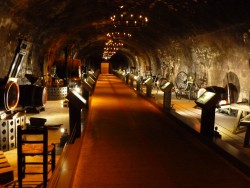
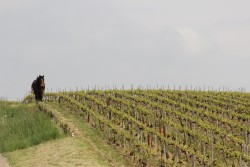 The champagne spread from the palaces of 18th century aristocrats to engulf most of the continent. As production slowly but constantly shifted to sparkles in north-eastern France the Champagne Houses were founded. With developments of the Industrial Revolution those soon-to-be giants of the wine industry were able storm the holds of the emerging middle-class. Susceptible to Europe’s varying tastes (sweetness levels dropped reasonably for example) champagne has changed a lot. The fashion, upheld by the strict production control forced with introduction of the appellation in early 20th century, drove sales to unprecedented levels. Today, champagne still retains its position as a symbol of things select and exquisite in the popular culture.
The champagne spread from the palaces of 18th century aristocrats to engulf most of the continent. As production slowly but constantly shifted to sparkles in north-eastern France the Champagne Houses were founded. With developments of the Industrial Revolution those soon-to-be giants of the wine industry were able storm the holds of the emerging middle-class. Susceptible to Europe’s varying tastes (sweetness levels dropped reasonably for example) champagne has changed a lot. The fashion, upheld by the strict production control forced with introduction of the appellation in early 20th century, drove sales to unprecedented levels. Today, champagne still retains its position as a symbol of things select and exquisite in the popular culture.
Find out more about champage at the International Wine Tourism Conference (IWINETC) by clicking on the Conference programme below:
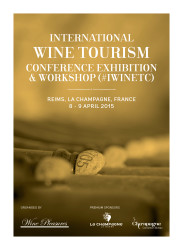
0 Comments